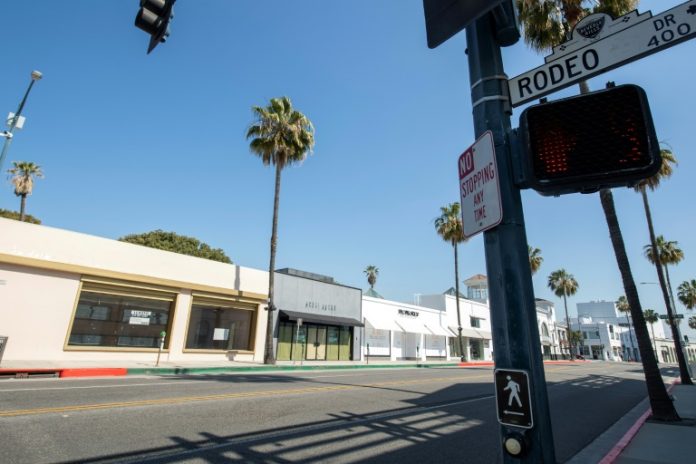As the US economy craters amid the damage inflicted by the coronavirus shutdowns, businesses jettisoned jobs at an alarming rate last month, according to government data Friday, and the situation is expected to get dramatically worse.
US employment plunged by 701,000 in March and the jobless rate surged to 4.4 percent, the Labor Department reported.
Yet the department acknowledged its statistics could not yet capture the full extent of the damage, and its own weekly data on first-time claims for jobless benefits showed 10 million people lost their jobs in the last two weeks of the month.
With COVID-19 cases topping a million worldwide, a quarter of which are in the United States where the death toll is over 6,000, cities have turned into ghost towns and officials are struggling to find ways to ease the ruinous damage to the economy and individuals.
“The drop in payrolls in March was unprecedented for the start of a recession and will get more than twenty times worse in April,” said Diane Swonk of Grant Thornton.
“We will easily lose more than twice as many jobs as we lost during the Great Recession during the first two months of this crisis alone,” she said in an analysis.
The monthly report reveals the worst job loss since the depths of the global financial crisis in March 2009 and the biggest single-month jump in the jobless rate in more than 45 years.
However, the Labor Department acknowledged it “cannot precisely quantify the effects of the pandemic on the job market in March,” and errors in counting those who lost jobs mean the unemployment rate was like a full point higher.
Economists predict the figures in April will be devastating, with a double digit unemployment rate and as many as 20 million jobs destroyed.
The leisure and hospitality sectors – among the first to feel the impact of the travel restrictions imposed to contain the virus – lost 459,000 jobs last month, the report said.
But the harm was widespread and notable losses also were recorded in healthcare, retail and businesses services.
The data were released on the same day as the government began a new program to encourage businesses to retain workers and rehire those who were laid off.
– Underestimating the damage –
“This is terrible but unfortunately it’s nothing compared to what’s coming in April,” said Ian Shepherdson of Pantheon Macroeconomics, who predicts a jobless rate of 12 to 14 percent next month.

The two surveys that make up the closely-watched monthly government jobs report are taken during the week that includes the 12th of the month, which in March was before the most restrictive of the lockdowns were imposed that closed businesses nationwide.
“It is important to keep in mind that the March survey reference periods for both surveys predated many coronavirus-related business and school closures in the second half of the month,” the report said.
Even if it underestimates the true job losses, the payroll drop was far larger than economists had forecast, likely because government economists, in an effort to capture the virus impact on the labor market, changed how it classified individuals.
The report said they counted workers as unemployed if they were “absent from work due to coronavirus-related business closures.”
However, the department cautioned that because of the lockdowns, the response rate from businesses and individuals was far lower than usual.
– ‘Traumatic’ –
As the decade-long employment gains came to a screeching halt, “the labor market has entered a traumatic period,” Gregory Daco of Oxford Economics said.
The government’s paycheck protection program offers to businesses of 500 employees or less $349 billion in loans that will not have to be repaid if they retain and rehire workers and use most of the funds to continue paying wages.
“This will be up and running tomorrow. You’ll get the money, you’ll get it the same day,” promised Treasury Secretary Steven Mnuchin, speaking at the daily White House press briefing on Thursday.
But he acknowledged that there may be some delays in getting the funds even though the process has been streamlined, and some banks were saying they did not have complete information on how the program was going to work.
The total unemployment rate rose from a 50-year low of 3.5 percent to its highest level since August 2017.
And the pain was felt across all groups, with unemployment for adult men and women each rising to 4.0 percent, while the jobless rate for African Americans jumped to 6.7 percent.
The impact on Hispanics was even worse, surging to 6.0 percent from 4.4 percent in the prior month.







